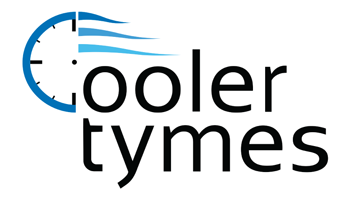It’s always nice when we manage to save money on our utility bills, but it turns out there’s a way to lower energy use, even when you’re not even home.
The key is your thermostat. By using automatic schedules, you can structure its daily schedule around your personal preferences. This means establishing various temperature settings for when you’re at home, away or even when you’re sleeping.
If you’re willing to make these adjustments, you have more time to enjoy pleasant temperatures while cutting down your energy bills. Check out our guide on how your thermostat can save you money in the summer:
While at Home
When you’re home, you want to enjoy a comfortable temperature. That’s why it’s best to set your thermostat lower in the summer while inside to appreciate the cool air.
But in terms of energy efficiency, the best range for the summer is actually around 78 and 80 degrees Fahrenheit. This way, you can stay cool while keeping your energy bill more manageable.
While Away
If you’re setting the temperature for whenever you’re gone, it’s extremely common to move the thermostat higher than normal.
For some homes, you can set the thermostat to temperatures as high as 88 degrees while no one is home and then lower it back to the sweet spot of 78-80 degrees once you’re home again. This way, your air conditioning unit won’t be working overtime to provide cooling for a bunch of empty rooms.
While Sleeping
To enjoy a good night’s sleep during the summer, you want a nice cool temperature. A good rule of thumb is between 68-72 degrees Fahrenheit. There’s less risk of getting too hot or too cold while you’re trying to sleep.
Additional Ways to Reduce Energy Use:
- Install a smart thermostat: Using a smart thermostat in the summer helps save money on energy costs by automatically adjusting to your lifestyle and home environment. They can lower the temperature while you are home or sleeping, before allowing it to get a little warmer when no one is around. With models like the Lennox iComfort, you can adjust the temperature remotely through your smartphone, tablet or laptop. Requesting smart thermostat installation in your Litchfield Park home can be the simplest strategy for maintaining comfortable, yet energy-efficient temperatures whether you’re at home or across the country.
- Update your existing HVAC system: A new HVAC system can save money in the long run. By investing in a more energy-efficient system, lower utility bills won’t be far behind since it requires less energy to reach your preferred temperatures. Air conditioning installation in Litchfield Park is a great way to beat the heat in the summer.
- Stay on top of routine AC maintenance: Whether or not you keep up with regular air conditioning maintenance in Litchfield Park can have a significant impact on your utility bills. By regularly cleaning the coils, checking for damage and keeping vents clear of dust and debris, this can help your HVAC system run more efficiently. Higher energy efficiency will also reduce strain on the unit and lowers operational costs, leading to lower energy usage, which translates into lower energy bills.
- Clean or replace the air filter on a regular basis: Regularly changing the air filters in your HVAC system saves money by helping air flow efficiently through your air conditioner. When filters are old and less effective, an AC unit has to work harder, and this greater strain could shorten the system’s life span and lead to breakdowns.
- Confirm your attic is sufficiently insulated: Insulation is a vital part of maintaining an energy-efficient home, keeping the hot air outside and the cool air inside during the summer. The North American Insulation Manufacturers Association (NAIMA) recommends that homes in the southern United States should install at least 13-14 inches of insulation, while those in northern U.S. states should have 16-18 inches.
- Review your ductwork: Damage to the ventilation is capable of increasing your energy bills much more than 20 percent, plus it can potentially allow harmful emissions from your water heater, clothes dryer and other appliances to get into the atmosphere of your home. Finding any leaks fast and sealing them can help with both these issues.
- Seal all other leaky spots in your home: Sealing leaky spots in your home with caulk, foam sealant or weather-stripping helps keep things cooler during those hot summer days. You should also check for any gaps around windows, doors and even outdoor fixtures. Devoting time and effort to sealing leaks now can help you save a lot in the long run.
